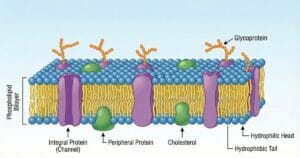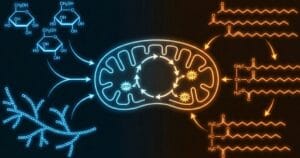
COMPETITIVE EXAM MCQs SERIES of ENVIRONMENTAL SCIENCE for UGC-NET/JRF, SLET, ARS, GATE, and other entrance tests –Solid Waste Collection and Transportation.
Syllabus Outline
- Classification of solid waste: residential, commercial, industrial, and hazardous.
- Types of collection systems: door-to-door, curbside, communal.
- Design and planning of collection routes and schedules.
- Types of collection vehicles: compactor trucks, dump trucks, roll-off trucks.
- Equipment used for loading and unloading waste.
- Methods of waste transportation: direct haul, transfer stations, long haul.
- Optimization of transportation routes and logistics.
This quiz contains the concept-based most frequently asked 25 MCQs of “Solid Waste Collection and Transportation“. Each question has a single correct/most appropriate answer.
*****
1. What is the key principle of effective Municipal Solid Waste Management?
a) Reduce, Reuse and Recycle
b) Incinerate, Compost and Landfill
c) Burn, Dispose and Bury
d) Collect, Transport and Dump
2. As per Solid Waste Management Rules, 2016, fruit and vegetable peels should be collected in:
a) Black bin
b) Blue bin
c) Green bin
d) Yellow bin
3. Which of the following factors is NOT considered in determining the frequency of solid waste collection in urban areas?
a) Population density
b) Seasonal variations
c) Type of waste generated
d) Availability of collection vehicles
4. Which method is mainly used for household solid waste collection in densely populated urban areas?
a) Door-to-door collection
b) Community bins
c) Open dumping
d) Incineration
5. What is the advantage of compactor trucks for solid waste collection?
a) Reduced collection costs
b) Increased collection efficiency
c) Lower environmental impact
d) Faster collection times
6. Which of the following factors is NOT typically considered in route optimization for solid waste collection?
a) Distance between collection points
b) Traffic conditions
c) Collection vehicle capacity
d) Frequency of waste generation
7. What is the main purpose of using GPS technology in solid waste collection vehicles?
a) Route optimization
b) Monitoring fuel consumption
c) Tracking vehicle location
d) Recording collection data
8. What is the advantage of using transfer stations in solid waste management systems?
a) Reduction in transportation costs
b) Decreased environmental pollution
c) Improved waste segregation
d) Minimization of odour emissions
9. What is the primary purpose of using waste compaction equipment at transfer stations?
a) To reduce odour emissions
b) To increase transportation efficiency
c) To facilitate waste segregation
d) To minimize noise pollution
10. Which method is commonly used for solid waste disposal in rural areas?
a) Landfilling
b) Incineration
c) Composting
d) Waste-to-energy conversion
11. What is the primary disadvantage of using handcart-based collection systems for solid waste?
a) High labour costs
b) Limited waste capacity
c) Increased air pollution
d) Inefficient waste segregation
12. What is the primary advantage of using rear-loading collection vehicles for solid waste collection?
a) Higher collection efficiency
b) Lower collection costs
c) Reduced risk of worker injury
d) Faster collection times
13. What is the primary purpose of using waste transfer trailers in solid waste management systems?
a) To transport waste over long distances
b) To facilitate waste segregation
c) To reduce environmental pollution
d) To increase waste capacity
14. Which method is commonly used for construction and demolition waste disposal?
a) Landfilling
b) Composting
c) Incineration
d) Recycling
15. Which method is commonly used for medical solid waste disposal?
a) Incineration
b) Composting
c) Landfilling
d) Open dumping
16. Which of the following methods is commonly used for sewage sludge disposal?
a) Landfilling
b) Composting
c) Incineration
d) Open dumping
17. What is the primary advantage of using side-loading collection vehicles for solid waste collection?
a) Higher collection efficiency
b) Lower collection costs
c) Reduced risk of worker injury
d) Faster collection times
18. Transfer stations in solid waste management serve the purpose of:
a) Sorting and processing waste for recycling.
b) Bulking waste for efficient transportation to landfills.
c) Treating leachate generated from landfills.
d) Disposing of hazardous waste materials.
19. Which factor is mainly considered in the LCA of solid waste transportation?
a) Fuel efficiency of collection vehicles.
b) Airborne emissions from waste decomposition during transport.
c) Noise pollution generated by collection activities.
d) Public health risks associated with waste handling.
20. Waste-to-energy facilities located near landfills can offer advantages like:
a) Reduced transportation distances for waste.
b) Increased landfill capacity through volume reduction.
c) Improved air quality due to reduced methane emissions from landfills.
d) Elimination of the need for separate waste collection systems.
21. When designing a new waste collection system for a rapidly growing urban area, what factor should be the highest priority to ensure long-term sustainability?
a) Minimizing capital investment costs.
b) Maximizing collection efficiency and frequency.
c) Promoting public participation and waste reduction behaviours.
d) Selecting collection vehicles with the largest capacity.
22. As per Solid Waste Management Rules, 2016, paper cardboard and cartons should be collected in:
a) Black bin
b) Blue bin
c) Green bin
d) Yellow bin
23. What is the main role of primary collection in waste management?
a) Segregating waste at the source
b) Transporting waste to landfills
c) Lifting and removing waste from its source
d) Recycling waste materials
24. Why is segregation at source important for waste minimisation?
a) To reduce the cost of waste collection and transportation
b) To increase the quality of recyclable materials
c) To prevent contamination of recyclable materials
d) All of the above
25. What is the purpose of secondary collection and transportation?
a) To promote waste minimisation
b) To ensure proper storage of waste
c) To transport waste to the processing facility or disposal site
d) To decrease the quantity of waste generated
*****
Previous: Characterization of Solid and Hazardous Waste
Next: Solid Waste Processing and Recovery
References
- Kreith, F. & Tchobanoglous, G. (2002) Handbook of Solid Waste Management, McGraw-Hill, 2nd edition.
- Bhide, A.D. & Sundaresan, B.B. (1983) Solid Waste Management: Collection, Processing, and Disposal, Indian National Scientific Documentation Centre, 1st edition.
- Agarwal, S.K. (2005) Solid Waste Management, APH Publishing Corporation, 1st edition.
- Rao, M.N. & Sultana, M. (2013) Solid and Hazardous Waste Management, B.S. Publications, 1st edition.

